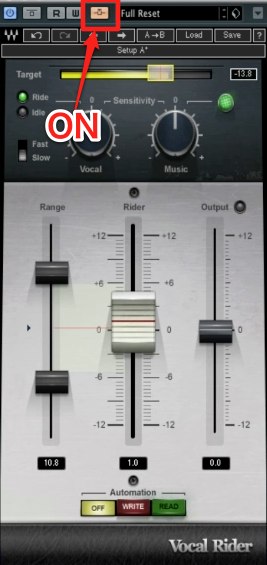
It can do great things to warm up a slightly sterile-sounding master, but can also be put to great use in a 2-bus chain to mix into. If you’re after a compressor that takes its cues from some classic hardware units and can impart some color and mojo, look no further than the Ozone Vintage Compressor. That said, the Vintage Compressor can also do lovely things on your drum and instrument buses, so don’t be afraid to try it there! Let’s take a look at some use cases for both.
Waves vocal rider vs compressor pro#
Whether you call it your 2-bus, your mix bus, or your master bus, this is where the Vintage Compressor and Dynamics modules included with Ozone Pro are most at home-or in a dedicated mastering session, of course. Do be aware that because compression is happening below the threshold, the attack and release controls sound a bit like they’ve swapped functions.Īdd to all this Vintage mode, auto release, variable soft-knee, and the parallel mix controls, and you’ve got a true powerhouse processor for just about any mix compression scenario you can dream up. This can be great for enhancing low-level detail without squashing the peaks. Ratios of 0.9:1 and lower turn Neutron’s compressor into an upward compressor, turning up signals that fall below the threshold. Lastly, don’t forget to check out compression ratios below 1:1. Or, for a more transparent take on sidechaining the bass to the kick, use the external sidechain but restricted to the low band to make room for the low end of the kick without causing pumping in the upper harmonics of the bass. This can achieve that classic sidechain pumping without adding any additional compression to the kick. The possible applications here are far too numerous to list, but here are a few ideas.Īdd some pump and bounce to a drum loop or drum bus by keying a higher band to a low one restricted to the thump of the kick. Not only can you key one band-split off another internally, but you can also key from an external source either wideband or via any of the band splits you’ve set up. Sidechain detection in the Neutron compressor is also extremely versatile. This can work wonders to pull a little extra plucky attack out of something like a bass while still keeping the low end firmly controlled and preventing it from getting thumpy.

One more example: use two bands with broadly similar ratios and thresholds, but slightly different timing to accentuate different parts of a signal. Or, you could move that band split lower down to just compress the low end of an instrument or bus. For example, you could create a single split somewhere in the upper midrange and use the high band like a de-esser, or high-frequency limiter to control spikey high frequency transients. Of course, you may only want to compress a single band. The Neutron compressor also offers targeted compression for up to three independent bands.

You could even combine this with the detection filters to further tailor the frequency response of the detection filter. If you’re after slower, leveling-style compression, but find RMS mode reacts too strongly to low frequency components, give True mode a try. True Envelope mode addresses this by normalizing the signal across all frequencies, giving them all equal footing. In a bog-standard RMS detector, low frequencies tend to dominate due to their comparatively higher energy. Its unique True Envelope mode looks to solve one of the common issues associated with RMS detection.

While most compressors use either peak or RMS detection, the Neutron compressor offers three level-detection modes: RMS, Peak, and True.
Waves vocal rider vs compressor how to#
Honestly, we could dedicate an entire article to everything you can do with Neutron Pro’s compressor, but here are some key bits of functionality that go beyond your typical compressor controls, and high-level ideas on how to use them. If you’re looking for incredibly versatile compression on instruments and buses across the rest of your mix, Neutron Pro has you covered. I personally like Solid State followed by Vintage or Optical! Neutron Pro’s Compressor If you find those to be too colorful, Digital mode with RMS detection can be astonishingly invisible, while still imparting the level control you need.įor a classic approach to vocal compression, try using Compressor 1 for fast transient control, and Compressor 2 to even out the body of your vocal. If, on the other hand, you want to add some harmonic coloration, give Solid State mode a try.įor a smooth, even body, Vintage and Optical modes with RMS detection really shine.

If you’re looking to keep things clean and pristine, stick with Digital mode. Nectar Pro’s Digital and Solid State compressor modes are particularly well suited to transient control when set to use peak level detection.


 0 kommentar(er)
0 kommentar(er)
